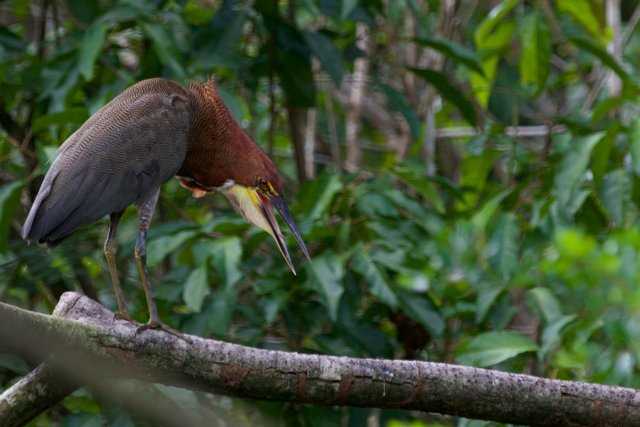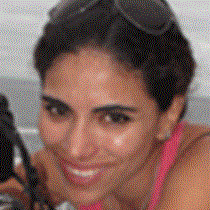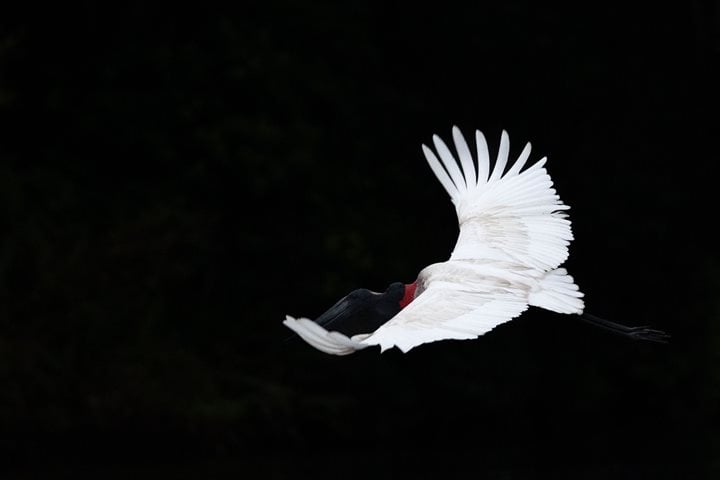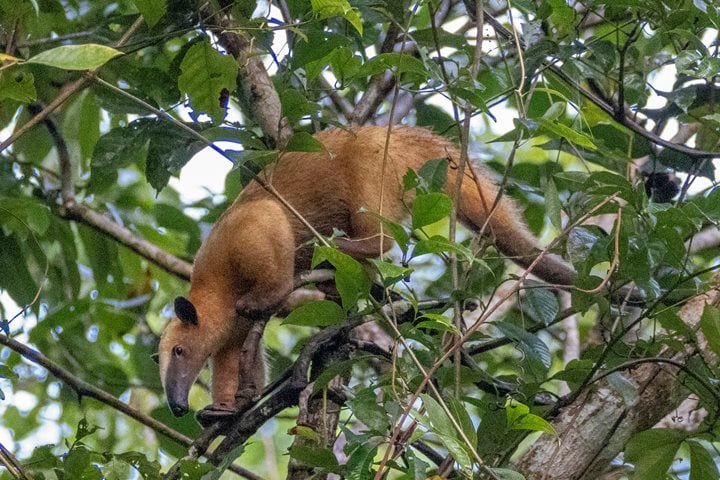Today was our last full day in the Peruvian Amazon. We started with an amazing exploration of a rarely visited area, due to its distance, Iricahua Caño. The creek here is used, during the rainy season, as a shortcut to navigate from the Ucayali River to the Marañon River. The place is outstanding. Fichus trees are huge; their roots make a labyrinth that hides many different species. The first we spotted was a caiman lizard. This colorful reptile was sited on a branch trying to find some light to warm up before it started its day. Then on the trees we found many birds. Scarlet macaws were so colorful! We spotted some raptors such as the cara-cara, black hawk, and black-collar hawk. Off course we couldn’t say good-bye without spotting some monkeys, so squirrel monkeys came to the encounter, as well as saddle-backed tamarins. One of the highlights was a rufescent tiger-heron who had been fishing…it seemed that his day was going way too good, as we saw him regurgitating two fish that were too much food for him. Once again we were amazed by the ability of our local naturalist guides, Rudy, Adonay, and Ericson, who can spot things we would have missed without them!
We navigated the river going back to Nauta, but on the way we had our last visit, to Puerto Miguel. From the first day we have been surprised by our hotel team with their always-new styles to decorate our tables. The handcrafts display the local fauna with the most amazing colors and natural fibers. So now we visited the village where this art is made: Puerto Miguel. We went walking around the town and we bought a memory, a story…and we remembered that handcraft is the second income in rural areas, and that supporting it is the only way to continue with this tradition, from one generation to the next.
We started our navigation back to our departure site. It’s hard to imagine that just a week ago we left Nauta to embark on this adventure. So many moments and experiences. We learned how to prepare a local dish and a local Pisco, we learned about medicinal plants, and we learned how to take better photos in these light conditions. We learned to love and respect the Amazon. Tropical forests around the world are the lungs of our planet, and so they are our own lungs. We come back tomorrow with a new perspective. That’s what travelling is about: learning. And by learning we become better everyday.






